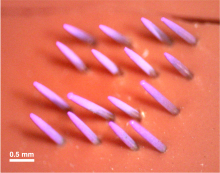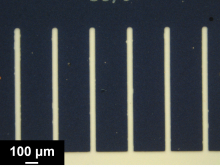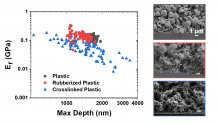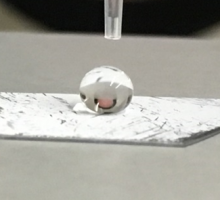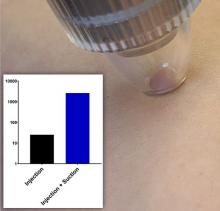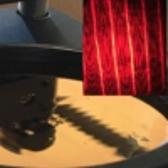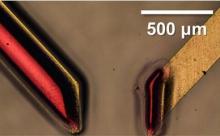In collaboration with the labs of Jerry Shan, Jeffrey Zahn, Hao Lin, and David Shreiber, along with Joel Maslow of our sponsor, GeneOne Life Science, Inc., and Rob Zipkin of Medchem 101, HMNL graduate student Sarah Park studied different strategies to manipulate the "charge landscape" in electrospray deposition to increase spray efficiency. In this way, we were able to achieve coatings that contained approximately 100% of the sprayed material on down to ~3 square mm of microneedle array from a spray needle located 4 cm away.

